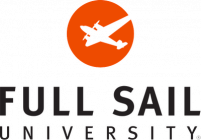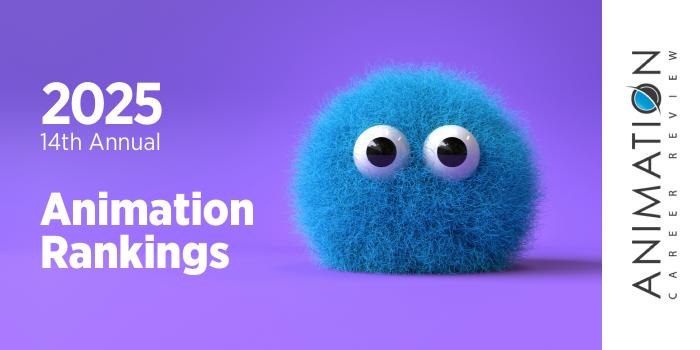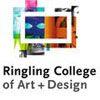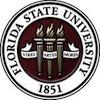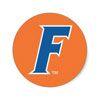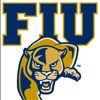University of Central Florida is home to Florida Interactive Entertainment Academy (FIEA). Developed in 2005 in partnership with the state of Florida, the City of Orlando, and UCF, the academy opened with just 12 students. Today, FIEA enrolls more than 130 students annually in its Interactive Entertainment MS program.
Housed in Nichols School of Communication and Media (in UCF’s College of Sciences), the FIEA MS program provides access to state-of-the-art facilities such as Studio 500. Launched in 2008, the studio houses a 3,300 square feet motion capture stage, which is one of the largest on the east coast. The studio also houses a 3,500 square feet soundstage. These facilities sit on what is known as UCF Downtown—a 7,000 student campus that focuses on film, games, communication, and interactive media.
Other FIEA benefits include internships and the opportunity to work in production teams mentored by industry professionals. Mentors provide instruction in areas such as 3D animation and modeling, game design, technical art, motion capture, software engineering, and creative collaboration.
The FIEA Interactive Entertainment MS program requires 30 credit hours of study, including 12 credit hours of core courses; nine credit hours in a specialization such as Art, Production or Programming; a practicum; and a capstone experience. The Capstone results in a large-scale project that will be presented at a special event for the FIEA community and invited guests.
Graduates of the Florida Interactive Entertainment Academy at University of Central Florida are prepared to pursue careers at major studios across the U.S. and abroad. To date, more than 250 companies have hired UCF FIEA graduates. Examples include Google, Electronic Arts (EA), Marvel, Sony, Gameloft, Microsoft Studios, Walt Disney Imagineering, Lockheed Martin, Epic Games, Industrial Light & Magic (ILM), Universal, Riot Games, Zynga, Ubisoft, Apple, DreamWorks, Blizzard Entertainment, Hasbro, Unity, Bungie, Gearbox Software, YouTube, Bethesda Softworks, and Naughty Dog.
The College of Arts and Humanities (CAH) at UCF has several additional programs for animators. Housed in the college’s School of Visual Arts and Design (SVAD) is the Emerging Media program with BFA and MFA options. Though not animation, SVAD also houses a unique Immersive Experience Design track within its Art BA program.
The Emerging Media BFA has two relative tracks, including Animation and Visualization (formerly Experimental Animation), and Character Animation. The Emerging Media MFA has an Animation and Visual Effects track. Animation and Visualization, and Character Animation are highly-competitive, portfolio-based tracks that take place in a professional studio environment. Other program benefits include faculty mentors; courses, research, and activities led by faculty members who have collaborated on projects with companies such as Unreal, Wacom, Autodesk, Unity, and Adobe; access to state-of-the-art facilities; and professional internships.
Course examples for the Animation and Visualization track include Introduction to Animation; Drawing Fundamentals I-II; Intermediate Animation; Modeling for Visual Language; Stop Motion Animation; Digital Effects and Compositing; Procedural Animation; and Animation and Visualization Workshop. The Animation and Visualization track culminates with the Animation Thesis Exhibition.
Course examples for the Character Animation track include Introduction to Animation; Visual Storytelling and Visual Development; New Imagery in Motion Workshop; 3D Textures; Digital Production in Artificial Environments; Advanced 3D Animation; and Character Animation Portfolio Review. This track culminates with the Capstone project.
Pixar, DreamWorks, Disney, and Electronic Arts (EA) are just a few recent employers of Emerging Media BFA graduates. Some program alumni also go on to launch their own independent studios and freelance businesses.
The Immersive Experience Design track within SVAD’s Art BA program explores areas such as immersive storytelling, design, illustration, and drawing. Course examples for the program include Design Fundamentals-Three Dimensional; Introduction to Computer Art; Drawing Fundamentals I-II; Art as Interface; History of Immersive Experience; Advanced Design Lab; and Professional Practices. The program culminates with the Art BA Capstone.
The Animation and Visual Effects track within the Emerging Media MFA is a specialized program that takes place in an environment designed to operate like today’s professional and independent studios. Students in this program benefit from first-year production courses; co-directing opportunities; and access to state-of-the-art labs and studios. This competitive terminal degree requires 60 credit hours of study completed over three years, full-time.
The culminating experience for the Emerging Media MFA-Animation and Visual Effects program is the Thesis Film. Graduates are prepared to pursue advanced roles at film studios, produce their own independent films, or launch their own studios. Program alumni are also prepared to pursue roles in emerging fields for animators such as simulations, augmented and virtual reality (AR/VR), real-time rendering, medical animation, virtual production, environmental animation, and artificial intelligence.
Emerging Media MFA graduates are routinely hired at major studios, gaming companies, and organizations such as Pixar, Epic Games, DreamWorks, Lockheed Martin, Electronic Arts (EA), NASA, Walt Disney Animation Studios, the U.S. Navy, Weta FX, Framestore, Lightbox, MPC, Titmouse, Netflix, Reel FX, Nickelodeon Animation, Riot Games, Blizzard Entertainment, and Blur Studios.
University of Central Florida was founded in 1963 as Florida Technological University (FTU). Roughly five years later, the school opened with just under 2,000 students. Today, University of Central Florida serves approximately 69,820 students, making it the largest university by enrollment in the state of Florida, and one of the top 10 largest universities in the U.S. More than 13,130 faculty, adjuncts, and staff members deliver close to 600 degree programs across 13 colleges and dozens of departments. University of Central Florida is accredited by the Southern Association of Colleges and Schools Commission on Colleges (SACSCOC).
